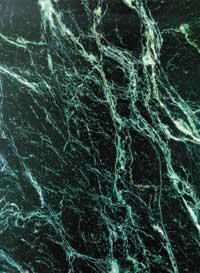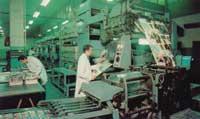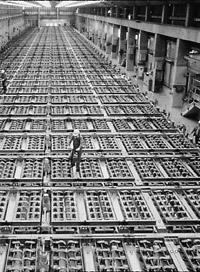Substitution of organic solvents in the industry
1998/02/01 Etxaide, Maider Iturria: Elhuyar aldizkaria
The most commonly used organic solvents are toluene, xylienes or ketones, but among them all chlorinated, such as perchloroethylene, 1,1-trichloroethane, trichloromethane, methylene chloride, chloroform and hexachlorobenzene, are the most toxic and dangerous.

Among the harmful effects for the human health of the organic solvents are: acute effects, irritation of the eyes, skin and respiratory tract, headache, nausea and fatigue, and as long-term effects, cancer, fertility problems, neurotoxic effects and liver damage. Some produce local effects and others are systemic, that is, they affect the functioning of other organs that have not been directly attacked. Inhalation is the most dangerous pathway of exposure by the ability of the lungs to disperse any substance throughout the body. Some substances that are absorbed through the skin do not produce visual effects on this body organ, while others cause violent burns.
Being substances produced by the human being, they also destroy the environment, since nature cannot assimilate or eliminate them. On the other hand, due to their similarity with cell membranes, they tend to accumulate in living beings, especially in fatty tissues, causing damage to both aquatic and terrestrial beings. Finally, some of these substances, such as CFC, carbon tetrachloride and 1.1 trichloroethane, mainly chlorinated solvents, destroy the ozone layer.
In this sense, various initiatives have been promoted to eliminate, or at least reduce, the use of dangerous solvents.
Project SUBSPRINT
The offset printing machines emit 1% of the total emissions of volatile organic products in Europe. Concerned about this, a group of European companies and institutions have undertaken a project to develop clean solvents for printing processes. The word SUBSPRINT is a summary of the denomination Substitution of organic solvents in the printing industry that supposes the substitution of organic solvents derived from petroleum by solvents and vegetable detergents. The aim of the project is to make known to the industries volatile vegetable detergents for offset machines.

The reduction of polluting emissions will greatly reduce the serious health problems that have always caused work in print shops. Therefore, the Subsprint project, part of the European SPRINT programme, aims to improve the environmental and sanitary conditions of the graphic industry. If this returns to figures, the total number of workers working with these toxic substances is approximately 120,000 and is intended to reduce to 18,000.
Denmark was the first to launch this experience in 1989, fostering the use of the ester of vegetable oils such as soybeans, rapeseed or coconut for cleaning printing machines. From there it was spreading to other European countries, beginning in 1992 the SUBSPRINT project. Today different organizations from 12 states, including trade unions, research centers, universities and graphic industries, collaborate in the execution of the project. At the state level, SERMASA (Energy and Environment Society) and Workers' Commissions are the organizations that are participating in this project.
It has been shown that cleaning products of vegetable origin, in addition to providing advantages from the sanitary point of view, are good detergents, reduce costs and also reduce energy and collection costs. The Danish company Haustrup, for example, has managed to drastically reduce the annual consumption of benzene for five years (from 40,000 to 2,000 kilos) and has stopped using kerosene (2,000 liters per year).
Research project VOFA Pro
Vegetable Oils and their fatty Acid Esters as Substitutes for Organic Solvents in Industrial Processes. This research project began in 1995 with the grant of the European Commission's AIR (Agro-Industrial Research Program) program. As already mentioned, the aim of this project is to classify vegetable oils and their fatty acid esters and adapt them for application in many areas. It has been shown that the esters of fatty acids are effective in many applications, so the possibilities of use of them in industrial non-industrial areas of the printing presses are high.

Gai honi buruzko eduki gehiago
Elhuyarrek garatutako teknologia





